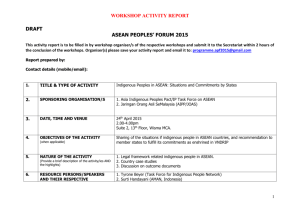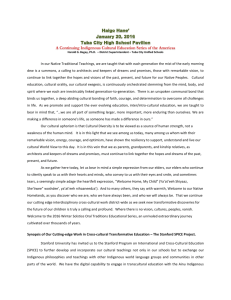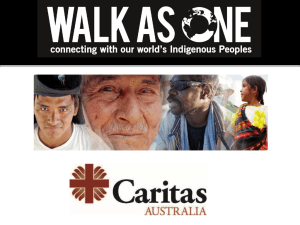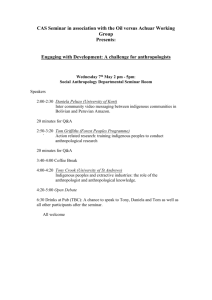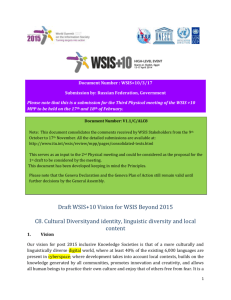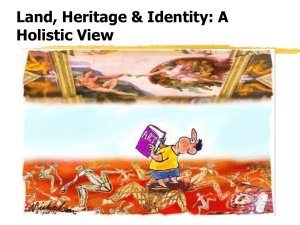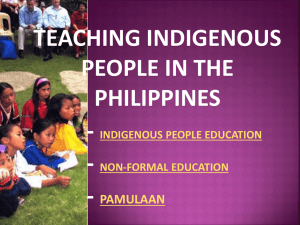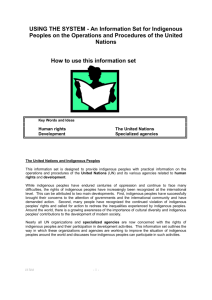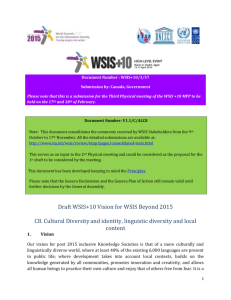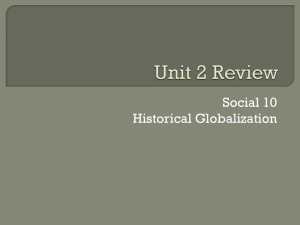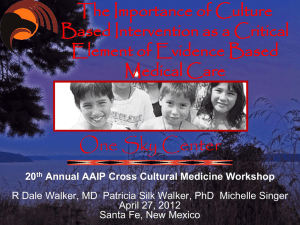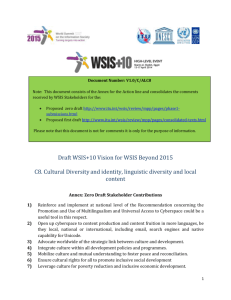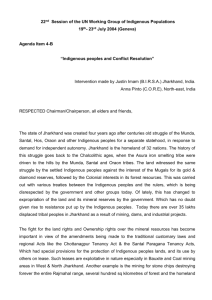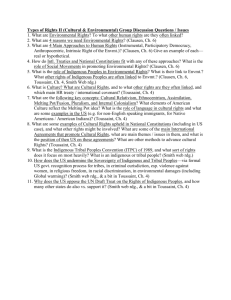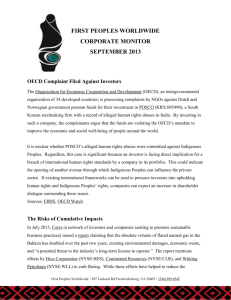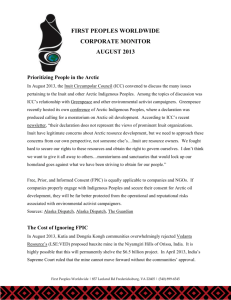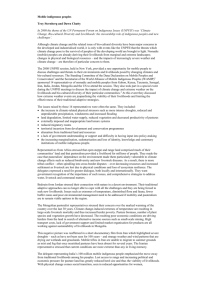Grand Chief Edward John Keynote Presentation (PowerPoint) 2012
advertisement
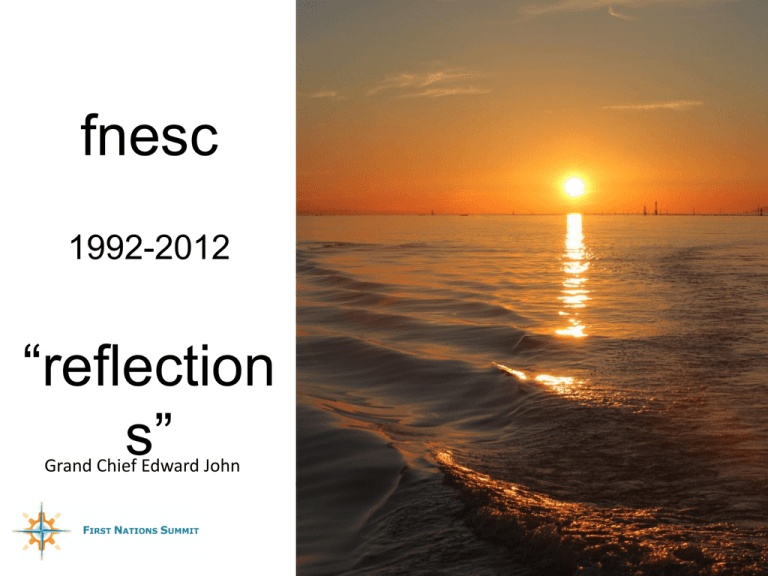
fnesc 1992-2012 “reflection s” Grand Chief Edward John The Web of First Nations – Crown Relations • • • • Separate Worlds Contact & Cooperation Displacement, Assimilation, Control Reconciliation & Negotiations Royal Commission on Aboriginal Peoples October 1996 “Indian Residential Schools” 1. RCAP - 3 part Vision 1. 2. 3. Remove Children from Communities and Families Pedagogy for re-socializing Integrate into non-aboriginal world. 2. PM Apology June 11, 2008 “Indian residential Schools is a sad chapter in our history… Objective was to kill the Indian in the child” 3. SCC Chief Justice Beverley McLachlin on Residential Schools: “cultural genocide” Renewal & Rebuilding Indigenous Languages & Land “language diversity is a major contribution to the wealth o every country’s cultural heritage and … there is need for political will and concrete actions to provide the resources needed to preserve this heritage, in particular Indigenous languages” - Grand Chief Edward John, Submission to the UN EMRIP, July 2012 “..effective April 1, 2011, the funding for First Nations in British Columbia increased from $232,470 to $818,228 annually” - Letter to the FNS from Heritage Canada and Official Languages (November 19, 2012) The Royal Commission on Education, 1988 Chapter 8 23. That the federal and provincial governments accord to Native bands and councils the appropriate authority and attendant resources to enable them to engage effectively in the self-determination of, or shared responsibility for, the education of their children. Further, that financial resources commensurate with meeting the actual costs of educating Native learners be available to bands and councils. Chapter 8 23. That, where Native children are enrolled in schools and/or school districts, Native peoples and school authorities jointly develop formal liaison processes to discuss and decide upon the maintenance and improvement of quality service to Native learners. The Royal Commission on Education, 1988 Chapter 8 25. That Native bands and councils and all school authorities cooperate in assisting Native learners to bridge their two cultures (Native and multicultural), by: 1) 2) 3) 4) 5) 6) 7) 8) improving home/school liaison, particularly throughout the early years of schooling; orienting all children, through formally developed curriculum units, to the history, culture, status, and contributions of First Nations people; reducing the impact of an inflexible graded school system upon Native children and allowing, in the early years of schooling, for a continuous, incremental pattern of learning; initiating means of assisting Native peoples in the preservation and promotion of their heritage languages, including their incorporation into classroom experiences; discouraging any evidence of racial bias on school transportation and premises; deliberately appointing or enlisting the volunteer support of competent Native adults as role models for all children; encouraging teachers to improve their knowledge and under standing of Native cultures, heritage, and traditions through individual initiative organizational support; and providing continuing counsel to Native students to prepare them for living and working in a multicultural society. The Royal Commission on Education, 1988 Chapter 8: 26. That compensatory actions be initiated by Native councils or bands, school authorities, and governmental agencies, to: (1) improve the pre-school and early-school-years language capabilities of Native children; (2) enhance the parenting skills of Native adults; (3) encourage Native adults to pursue advanced levels of basic education; and (4) improve the health, social, and economic circumstances of First Nations people, as ends in themselves, and in terms of their potential positive impact upon the learning of Native children. Who We Are & Where We Come From Tell ourselves and our youth: Be proud of who you are and where you come from. BUT: Who Are you? Indigenous kinship terms to define relationships. BUT: Where do you come from? Take students and youth from the land; use indigenous place names. UN Declaration on the Rights of Indigenous Peoples (46 Articles) A3: “Indigenous peoples have the right to self- determination.” A25: “Indigenous peoples have the right to maintain and strengthen their distinctive spiritual relationship with [their lands, territories, waters, seas] and to uphold their responsibilities to future generations…” A43: “The rights recognized therein constitute the minimum standard for the survival, dignity, and well being of the indigenous peoples of the world Adopted by UN General Assembly, September 2007. 2012 – Where We Are Suicide Pact in Vancouver Community By The Canadian Press – Story 83641 Nov. 23, 2012 “Dozens of children, mostly aboriginals, formed a suicide pact in a downtown Vancouver community. …” “According to the report, the suicide pact included 30 youths, 24 of whom were taken to hospital in late September as part of a “Preventive crisis response”. … [the children were between the ages of 12 and 15] …” Records number of aboriginals receive PhDs The Globe and Mail 22 November 2012 “Forty-three aboriginal doctoral students have graduated from UBC’s faculty of education in the past 20 years.” (11 doctoral students are to graduate this year.) References: Sullivan, Barry. "Royal Commission on Education: A Legacy for Learners: Summary of Findings." Writing for the Web: The blog of Writing for the Web 4th edition. 1988. Crawford Kilian. 23 November 2012. <http://crofsblogs.typepad.com/files/legacyforlear nerssummary.pdf>. UN General Assembly, United Nations Declaration on the Rights of Indigenous Peoples : resolution / adopted by the General Assembly, 2 October 2007, A/RES/61/295, available at: http://www.unhcr.org/refworld/docid/471355a82. html [accessed 23 November 2012] Thank You: Snachilya Haich ka Gilakas’la How’ah Chu way Gunalchesh Kukwts’etsemc


